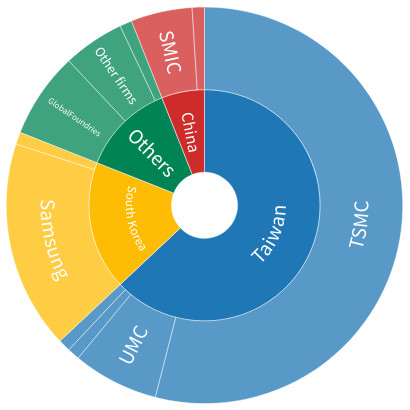Introduction
There are more and more reports about shortages in the supply of electronic components during the past year. What are the causes and should we be concerned? Will it lead to increased prices and will it last?
Let’s review the causes and what we can make of it.
Rising demand
The demand in electronics has been constantly rising for the last decades. One example is the demand for batteries, which is quite telling:
Demand for batteries in the last decades
Obviously, this means that the supply chain has to grow accordingly, which is not always a given. And electronics are not the only ones suffering from supply chain problems: plastics are also in a strange condition right now.
The “work from home” drill
One of the first reasons for the shortage is a higher demand from consumers. With the pandemic and everyone switching to remote working last year, people had to buy extra computers (at least one for every member of the family) or upgrade existing ones (think about a better camera, a better processor or graphics card to deal with the video live streams, a larger screen on your desk at home since it has become your semi-permanent office, etc.).
This sudden demand created a spike in an already congested industry, hence a shortage. The problem is that such a spike should be only temporary, but it looks like the situation is not going to be resolved anytime soon. What is going on?
Toilet Paper
Remember the toilet paper shortages? Well, that’s pretty much what is happening with the electronics industry right now. Because people started being aware of the shortage and the potential for it to become long term, they have acted exactly as they did with toilet paper. Buy more. As soon as possible. Before it is too late.
So the initial hit on the demand is also worsened by panic buying. Of course, buying an extra computer is not as easy for many people as buying toilet paper, due to the price difference. So while the effect is felt within days for toilet paper, the time frame is counted in months for electronics.
The car industry
The car industry is one of the most demanding in terms of electronics: our cars are getting stuffed more and more with those chips and gadgets, and it is getting to a point where the car industry is hit very badly by the shortage. It is currently causing very heavy losses in sales in that sector. Back to the first chart of this post above, we can see that batteries for electric-powered vehicles is mainly responsible for the demand to jump almost exponentially. Any shortage in those immediately results in slower production.
Accumulation of incidents
There have also been two major fires in the industry (one in Japan, another one in Taiwan), which have worsened the shortage, especially for memory chips.
On top of that is the winter incident in Texas, which closed chip making factories for weeks.
In an already tense supply chain, any extra incident can bring a system to its knees. And the recovery is difficult since the supply was already not sufficient.
Note that the whole world depends on Taiwan for the supply of chips, which doesn’t make it very resilient.
Source TrendForce
Pandemic supply chain disruption
As I warned a year ago on my blog at the beginning of the pandemic, Covid also disrupts supply chains since productivity is impacted – when the industries don’t close altogether. People needing to stay at home at the first sign of illness, whereas before everyone was still going to work with a running nose. And of course, wearing masks, material needing disinfection, etc.
All this obviously slows down existing systems. And again, in a “just-in-time” production mode with rising demand, this can only cause shortages.
Raw material shortage
As we all know, our planet is not infinite. With such a growth in demand, there must mathematically be a point when this never-ending growing trend goes beyond the total resources of the planet.
Along with silicon, some rare metals are getting scarce, if not already at the point of exhaustion. Other metals and rare-earth elements will follow, without any doubt. There would be a lot to talk about on this topic, but I’m keeping it short for now. Recycling those rare metals is typically a very big challenge – some of them in electronic components can actually never be recycled since it would need going to the atomic level.
And the shortage for some metals is not so far away. Just look at “other industrial metals” in the following chart, there is a chance you’ll see the shortage of some of them in your lifetime. And what then?
Shortages to come – what next? Source: Visual Capitalist
Conclusion
The current shortage has many causes. Some of them may be temporary, but others will undoubtedly be felt on the long term. Hopefully, as the price of the rarest materials increase, alternative technological solutions will enable us to replace rare materials with more common ones. Or maybe we’ll find this missing Germanium or Palladium on the Moon or Mars…






